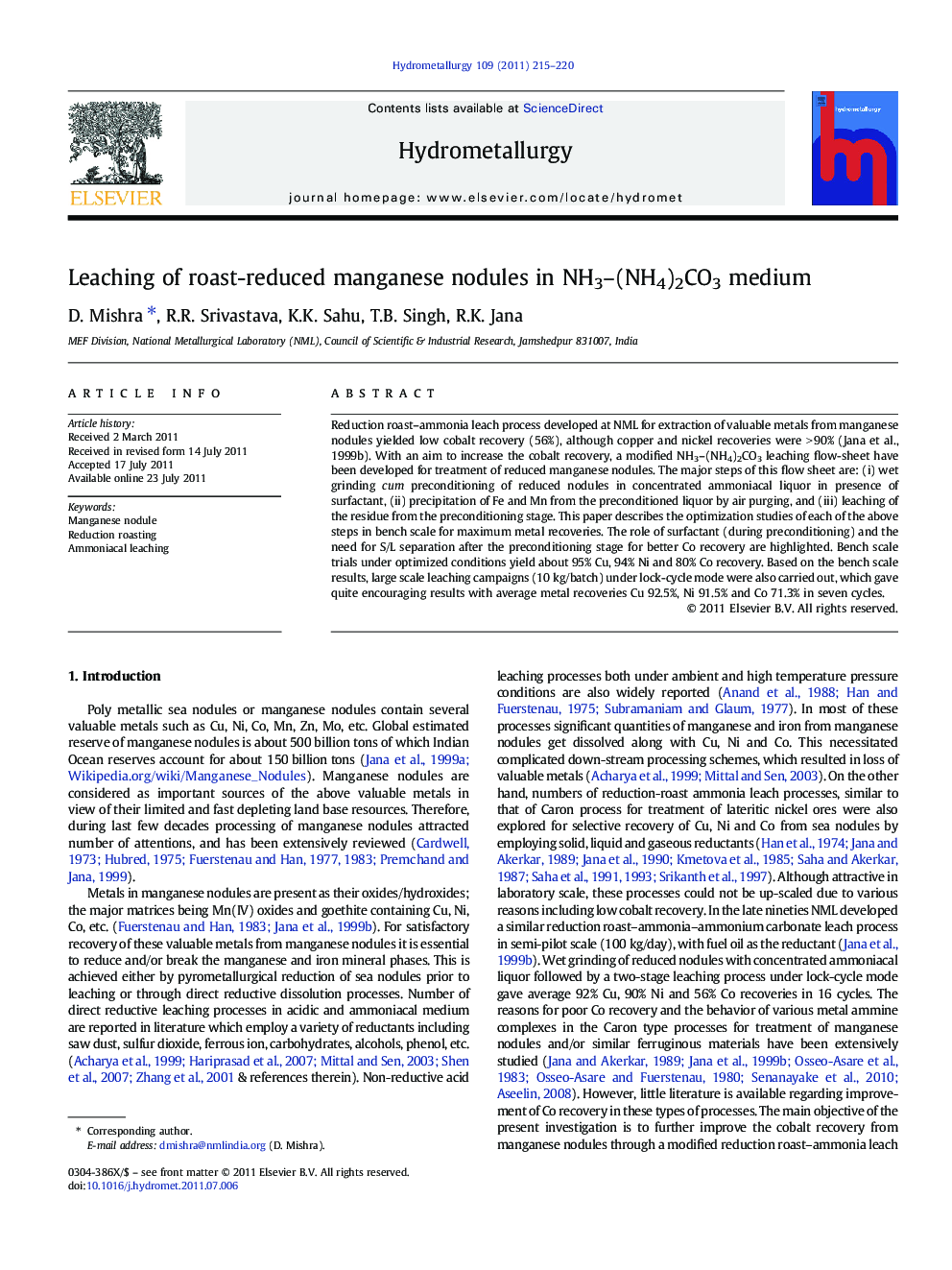| Article ID | Journal | Published Year | Pages | File Type |
|---|---|---|---|---|
| 212677 | Hydrometallurgy | 2011 | 6 Pages |
Reduction roast–ammonia leach process developed at NML for extraction of valuable metals from manganese nodules yielded low cobalt recovery (56%), although copper and nickel recoveries were > 90% (Jana et al., 1999b). With an aim to increase the cobalt recovery, a modified NH3–(NH4)2CO3 leaching flow-sheet have been developed for treatment of reduced manganese nodules. The major steps of this flow sheet are: (i) wet grinding cum preconditioning of reduced nodules in concentrated ammoniacal liquor in presence of surfactant, (ii) precipitation of Fe and Mn from the preconditioned liquor by air purging, and (iii) leaching of the residue from the preconditioning stage. This paper describes the optimization studies of each of the above steps in bench scale for maximum metal recoveries. The role of surfactant (during preconditioning) and the need for S/L separation after the preconditioning stage for better Co recovery are highlighted. Bench scale trials under optimized conditions yield about 95% Cu, 94% Ni and 80% Co recovery. Based on the bench scale results, large scale leaching campaigns (10 kg/batch) under lock-cycle mode were also carried out, which gave quite encouraging results with average metal recoveries Cu 92.5%, Ni 91.5% and Co 71.3% in seven cycles.
► Reduction roast-ammonia leach process to recover valuable metals from manganese nodules. ► Co recovery improved significantly by using additives. ► The process was up-scaled to semi-pilot scale (10Kg/batch) under continuous mode. ► Average metal recovery achieved: Cu = 92.5%, Ni = 91.5% and Co = 71.3% in seven cycles.
